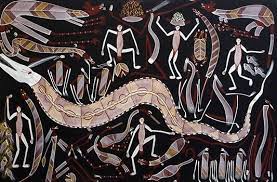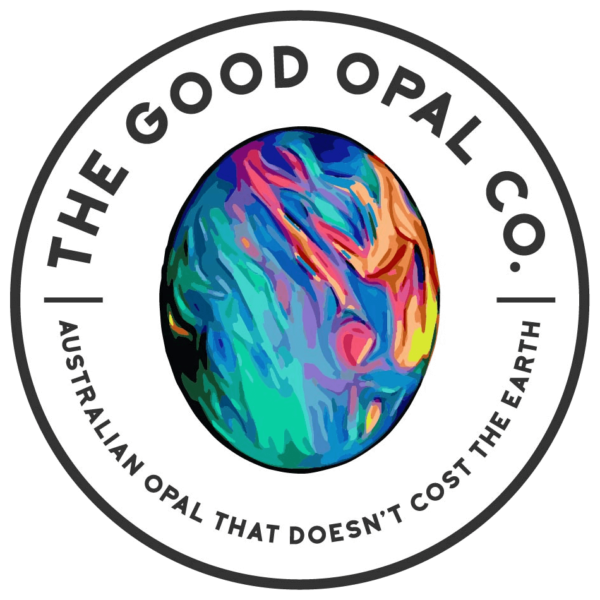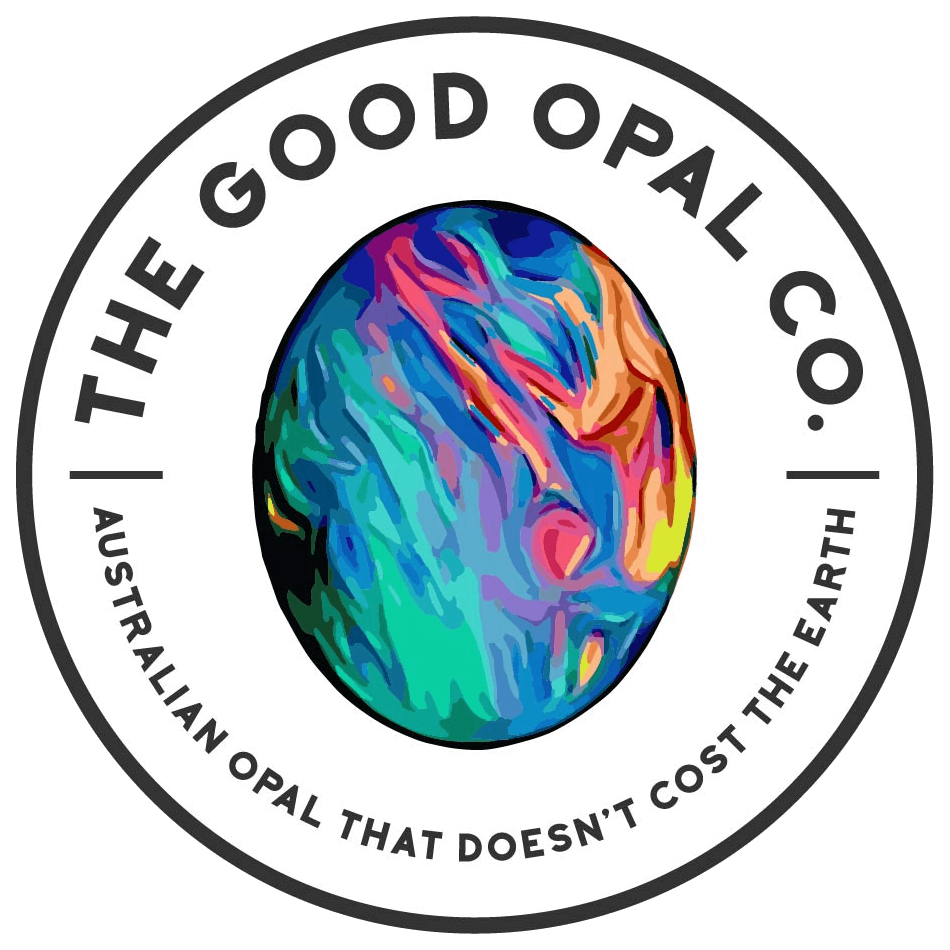I would like to start this blog by acknowledging the Traditional Owners of the land on which I live, the Wurundjeri People. I pay my respects to their Elders, past and present, and the Aboriginal Elders of other communities.

Indigenous Australia has a rich aural history spanning over 60000 years before the appearance of European settlers that extends to dreamtime about opal long before it’s ‘official’ discovery in Listowel Downs near Adavale in Queensland in 1869 and its entry into the global jewellery market.
Indigenous Australians hold a very spiritual connection to opal as they do to the land. Below we’ve listed just a few dream times stories of the Indigenous use of opal and the origins of Opal as told by the elders of Opal bearing countries.
South Australian Opal Dreamtime
For the Aboriginal countries around Andamooka in South Australia, it is believed that opal was created when the Indigenous Australian’s ancestral being was conveyed to earth via a great rainbow. Where the rainbow connected with the land, great rocks and pebbles formed and glittered in the sun with all the colours of the rainbow.
With tribes gathered, the Dreamtime creator explained the lore’s of the land and the people, that needed to be followed to establish their way of life. The outcrops of opal were sacred and due to their mystical properties, were to be used for ceremonial purposes in the belief that the rainbow would appear again one day. The first documented European discovery of opal in South Australia, occurred on the north-western bank of Lake Torrens, in 1935 at Andamooka.
About 400km north of Andamooka is Coober Pedy which mines most of the world’s seam opal from a 50km long Opal field.

NSW Opal Dreamtime
Black Opal was also discovered at Mintabie in the mid-1970s, which has now been closed and the land returned to the Indigenous Community. My favourite dream time story is told by the Yuwaaliyaay people of Wallangulla (Lightning Ridge) country.
The supreme spirit Bhiamie and his two wives Birring Ooloo and Cunnum-Biellie, swim in a spring, unbeknownst to them, Birring Ooloo and Cunnum_Biellie were being stalked by Gurria the Great Crocodile, wanting to covet their spirits. Gurria swallowed the wives whole and swam down the Narran River but Bhiamie tracked Gurria to a lake, speared him at Weetaliba water crossing, and as Gurria lay dying, the beast’s body was so large that beneath him, the earth gave way creating two holes-Corcoran Lake and Angledool Lake.
As Gurria died, it rained, and a rainbow appeared. The colours of the rainbow were trapped in Gurria’s scales, and with it, opal was formed in the ground. Bhiamie freed his wives from Gurria and brought them back to life.

In NSW, commercial Opal mining first commenced in the late 1880’s in the town of White Cliffs, it was not realised until about a decade later that the ground on which Lightning Ridge sat was richly laden with opal and in 1905 the first shafts were dug.
The vast area of the Queensland opal fields, which is spread across 1,000km, is the main supplier of Boulder Opal with its characteristic ironstone host. The areas of Winton, Quilpie, Jundah, Eromanga and Yowah are the main centres for production.
Queensland Opal Dreamtime
A dreaming from Central Queensland tells the story of the ‘weeping opal’ and comes from a time when a giant opal ruled over the land and its people when the world was young. This Aboriginal ancestor came to being after two tribes had been warring for so long that their weapons were either broken or lost so the warriors started to hurl boulders at each other.
One warrior threw a boulder so hard that it became stuck in the sky. The boulder started to expand until it burst and revealed the colours of a huge opal. As the opal sprit saw the ravages of the war between the two tribes, tears streamed down as a rainstorm. When the sun shone to reveal the colours of the tears, the survivors of the war saw their first rainbow.
If you would like to learn more about opal, we add to our blog page weekly 🙂
https://www.goodopalco.com/blog-the-good-opal-co-blogs-on-opal/
Sources:
https://lightningridgeinfo.com.au/opal-history.html
https://digital.library.adelaide.edu.au/dspace/bitstream/2440/111998/2/02whole.pdf

